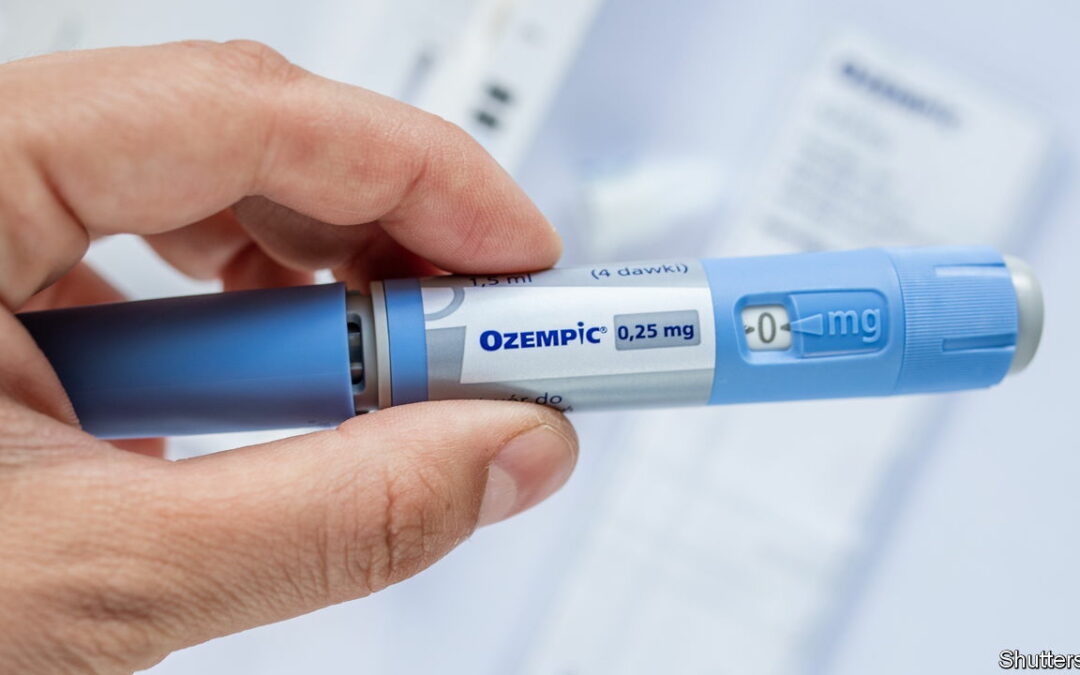WEIGHT-LOSS DRUGS are everywhere. In newspapers, on social media or by the water cooler, the gossip about injections that can help to melt away 10-20% of one’s body weight is hard to avoid. The real news is getting buried. These drugs offer a powerful new option to treat obesity, which is now widely accepted by doctors as a chronic disease. Being seriously overweight raises a person’s risk of suffering from diabetes, heart disease, strokes and 13 cancers. But there is evidence that, for most people, dieting is not an effective way to lose and keep off large amounts of weight: the body fights attempts to shift more than a little. How might new drugs help?
The history of weight-loss medication is a sorry tale. In 1934 as many as 100,000 Americans were using dinitrophenol to shed excess pounds. It is toxic, causing cataracts and, occasionally, deaths. By one estimate 25,000 people were blinded by the drug; it was banned as a drug for human use in 1938 but deaths continue to this day as people are still enticed to buy it online. Next amphetamines became popular—until the risk of addiction and other side-effects became apparent. Ephedra, a herbal medication which in 1977 was taken by an estimated 70,000 people, was also banned in America after it led to deaths. Two other weight-loss drugs, rimonabant and sibutramine, were withdrawn from sale because of safety concerns.
The new generation of weight-loss drugs, which seem far safer, were discovered by accident. They were developed to improve glucose regulation in diabetics, who suffer from an excess of sugar in the bloodstream. The drugs use short chains of amino acids to mimic the hormones produced naturally by the body after a meal, but which diabetics sometimes produce in insufficient quantities.
The drugs semaglutide (sold as Wegovy) and tirzepatide (to be sold as Mounjaro) imitate the action of glucagon-like peptide-1 (GLP-1), one such hormone. This increases the production of insulin (which transports blood sugar into body cells) and reduces the production of glucagon (which releases sugar into the bloodstream from the liver). It also slows down the rate at which the stomach empties, creating a feeling of fullness that reduces appetite. In addition, the drug may increase energy expenditure by changing fat tissue into brown adipose tissue, which is more likely to be burned at rest. These effects not only help diabetics, but also promote weight loss.
There are drawbacks. Side-effects of GLP-1 drugs include nausea and vomiting and there are concerns that they may increase a person’s risk of developing thyroid tumours. The drugs certainly should not be taken for cosmetic reasons. They may also need to be taken for a lifetime: when patients stop taking them they regain most of the weight that they had lost. And they are expensive.
But the potential benefits of such drugs go beyond their ability to promote weight loss in individuals. By showing that molecular mechanisms hinder people’s attempts to lose weight, they show that gluttony is not to blame when people remain obese. That should slowly help to eliminate the stigma. Both weight-loss surgery and drugs are useful tools in the fight against obesity. But by changing the conversation these new drugs may remind health-system leaders that they need to do much more to encourage healthy lifestyles.

More action is ultimately needed because the problem is growing rapidly: more than half of the world’s population will be overweight by 2035, compared with 38% today, according to the World Obesity Federation, an NGO. New weight-loss drugs represent a turning-point in the treatment of obesity. But if governments want to spend less on medication and surgery, they will need to focus on preventing people from becoming obese in the first place. ■









